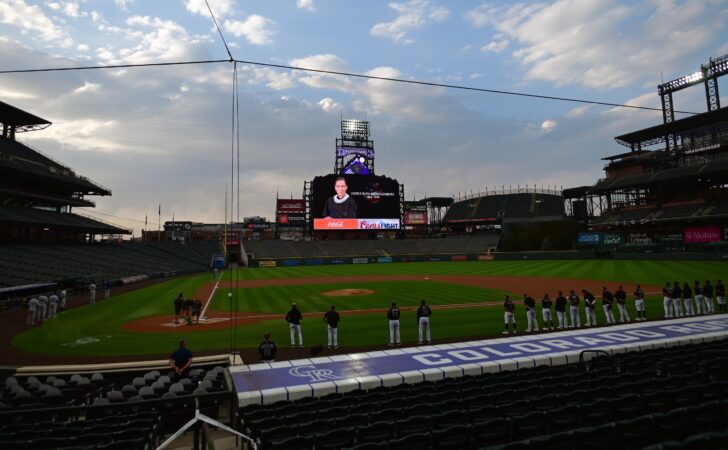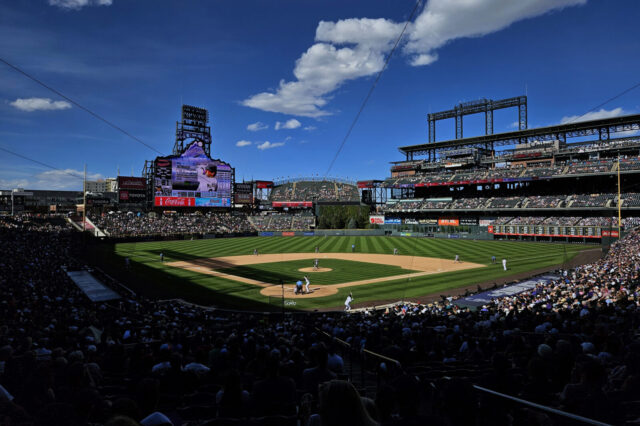It can be confusing, particularly with a near-constant stream of data and analysis, to weed out what’s really important when it comes to baseball stats. Some people prefer to stick with their wins, ERA, batting average, and home runs. And that’s fine. Others prefer WAR, wRC+, xWOBA, and FIP. All good, too.
But there are some metrics that really embody the difference between good teams and bad teams. And, when it comes to trying to make that distinction in 2020 in particular, it’s actually kind of simple: teams that have pitchers who miss bats and hitters who make hard contact are much better than those that don’t.
That’s the big takeaway from MLB.com’s Statcast guru Mike Petriello, who recently took a look at the stats that have really mattered in 2020. What he found is that 2020 actually doesn’t differ from any other year in which the data is available; barrel rate for hitters, strikeout rate for hitters, and expected weighted on-base average in either facet tell the story between the haves and have nots. As of Petriello’s writing, which was published on Friday, 13 of the 16 teams occupying a top-eight spot in either league ranked in the top 13 in barrel percentage offensively. On the pitching side, 12 of the top 16 teams in terms of strikeout rate were sitting pretty in the standings.
So, where do the Colorado Rockies fit into all of this? As you can imagine by looking at their 23-29 record and corresponding place in the standings, it doesn’t look good.
Entering the weekend portion of their series against the Los Angeles Dodgers, who outscored Colorado by 15 runs en route to taking three of four, the Rockies’ offense ranked 29th in baseball in barrel percentage. A barreled ball is essentially a perfect combination of exit velocity and launch angle, and most of the time an extra-base hit is the end result. The Rockies just don’t hit the ball hard with much regularity, and that shows through even when looking at more traditional stats; they rank in the bottom half of the NL in home runs, OPS, on-base percentage, and runs per game. When adjusting those numbers to reflect the Rockies’ advantageous home hitting environment, an even grimmer picture is painted. Colorado ranks 15th in the NL in wRC+ and is on pace for its worst season ever in that regard. OPS+, a similar metric calculated by Baseball-Reference, also has the Rockies at second-to-last in the NL.
On the pitching side, the Rockies have actually done a pretty good job at limiting barrels, ranking in the top 10 at limiting that sort of contact. But as we’ve seen so many times over the years, it’s not always the hard-hit balls that hurt the Rockies–especially at Coors Field, where an essentially uncoverable outfield rears its ugly head year after year. To that end, it would be greatly beneficial for the Rockies to miss bats altogether, but that simply hasn’t happened in 2020. Rockies pitchers rank dead last in baseball in strikeout rate at 17.4 percent, which is far below the 29th-ranked Detroit Tigers, who punch out 20.4 percent of the batters they face. Some Rockies pitchers who have been able to keep the ball on the ground while reasonably limiting hard-hit balls—Kyle Freeland and Antonio Senzatela come to mind—have had success with pitching to contact. But overall, Rockies pitchers allow more hard contact (not necessarily barrels, but batted ball events with an exit velocity of 95 mph or higher) than any other staff in baseball. That has really hurt—especially at 20th and Blake, where the Rockies finished the season 12-18 with a 6.45 ERA.
So, yes, two of the most important parts of fielding a good baseball team in the modern age are assembling a pitching staff that misses bats and a bench full of hitters who can put the barrel on the ball. The 2020 Rockies have been good at neither, and a tremendous missed opportunity with potential long-term ramifications appear to be the price the franchise will pay for failing to identify and solve the problem.



